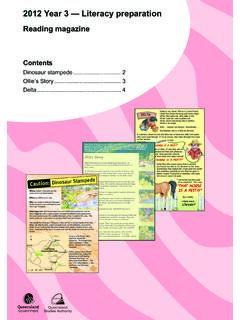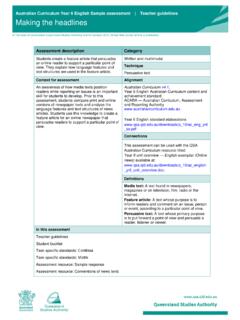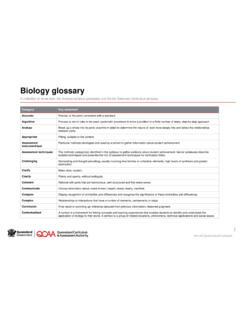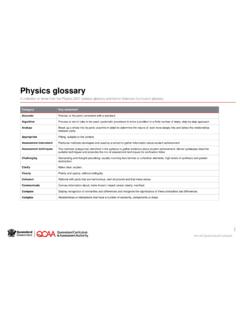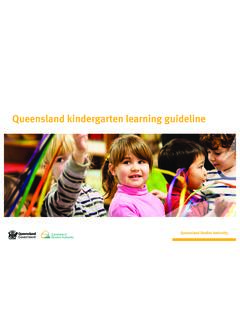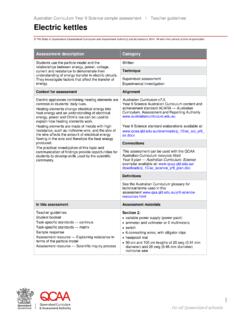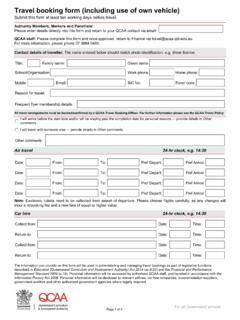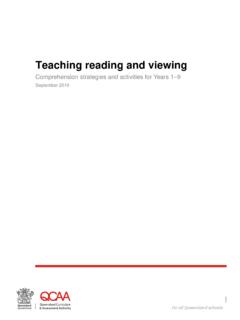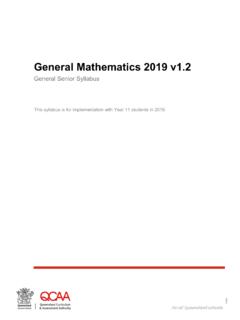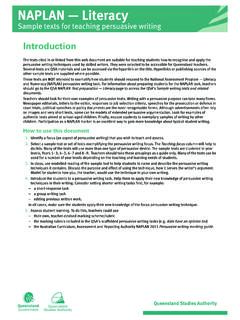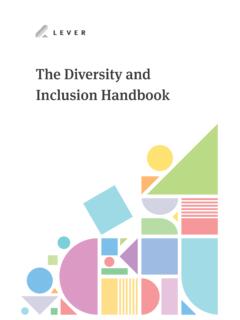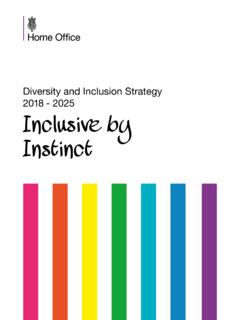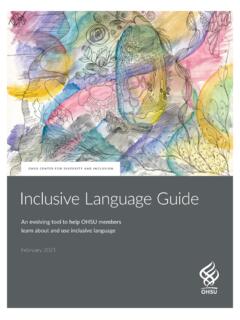Transcription of Inclusive strategies: What are they?
1 R0152 Rebranded July 2014 Background This resource should be read in conjunction with the following Queensland Curriculum and Assessment Authority (QCAA) documents: QCAA Equity Statement, which sets out the equity principles underpinning all QCAA products and materials, P 12 assessment policy, which lists the purposes and principles of assessment, Inclusive strategies Inclusive strategies enable a learner with disabilities to participate in learning experiences on the same basis as a learner without disabilities.
2 This is achieved by making adjustments to the delivery or mode of assessment, without changing the way the assessment is judged or marked. Under the Disability Discrimination Act 1992 (Cwlth) and the Disability Standards for Education 2005 (Cwlth), a teacher makes required adjustments to teaching and learning experiences and assessment tasks to enable a student to demonstrate their knowledge, skills or competencies. Adjustments to teaching, learning and assessment should not impact on judgments made about student achievement.
3 Adjustments to teaching, learning and assessment can be grouped into five broad areas: 1. Timing the amount of time allocated 2. Scheduling when assessment occurs 3. Setting where assessment is completed 4. Presentation how an assessment appears or is communicated to a student 5. Response how a student responds to the assessment. Note: More than one Inclusive strategy can be used. Developing Inclusive strategies Consider the following when developing an Inclusive strategy.
4 Expect all students to be able to demonstrate what they know and can do. Provide multiple opportunities for students to demonstrate what they know and can do. Plan early for any adjustments. Select adjustments that are appropriate for the individual student. Involve the student in the choice of the strategy. Inclusive strategies: What are they? Catering for diversity using the Australian Curriculum Inclusive strategies: What are they? Catering for diversity using the Australian Curriculum Queensland Curriculum & Assessment Authority July 2014 Page 2 of 3 Make sure the student is familiar with the strategy to be employed.
5 Cater for student learning strengths when planning adjustments. Incorporate appropriate adjustments into teaching and learning experiences and assessment. Offer variety, number and appropriateness of adjustments. Regularly review and refine adjustments. See: Record the use of adjustments in teacher and individual planning documentation. Adjustment examples Table 1: Five areas of adjustments to teaching, learning and assessment, with examples Timing Example Adjustments to the time allocated to complete an assessment are used to: provide extra time to read a written text provide extra time to write responses provide extra time to use specialised equipment or technology allow smaller, more frequent periods of time to complete an assessment enable multiple or frequent breaks.
6 The teacher plans shorter sessions and provides frequent feedback about an assessment that is completed over a number of weeks. For more information see Inclusive strategy: Timing: Scheduling Example Adjustments to when an assessment occurs are used to: coordinate with medication and other health procedures overcome distractions reduce anxiety and frustration. The teacher plans for the student to give a spoken presentation to the teacher and a friend outside of the classroom context. For more information see Inclusive strategy: Scheduling: Setting Example Adjustments to where an assessment is completed are used to: overcome distractions overcome sensory issues enable explicit individual scaffolding to be provided reduce anxiety and frustration.
7 The teacher plans for the student to complete the assessment in a carrel desk away from distractions. For more information see Inclusive strategy: Setting: Presentation Example Adjustments to how an assessment is presented or delivered to a student are used to: support sensory needs provide support with the literacy demands of the assessment reduce anxiety and frustration encourage the student to engage with and complete the assessment scaffold memory, sequencing, directionality and organisational skills.
8 The teacher provides graphic representation (picture cues) of the requirements of the assessment. For more information see Inclusive strategy: Presentation: Inclusive strategies: What are they? Catering for diversity using the Australian Curriculum Queensland Curriculum & Assessment Authority July 2014 Page 3 of 3 Response Example Adjustments to how a student responds to the assessment are used to: meet student needs related to physical and sensory barriers that prevent the demonstration of achievement encourage the student to complete the assessment.
9 The teacher plans for the student to use a personal computer or word processor to complete lengthy written assessment when handwriting is not being assessed. For more information see Inclusive strategy: Response: More information For further information, please email the Australian Curriculum Branch at or phone 07 3864 0462.
